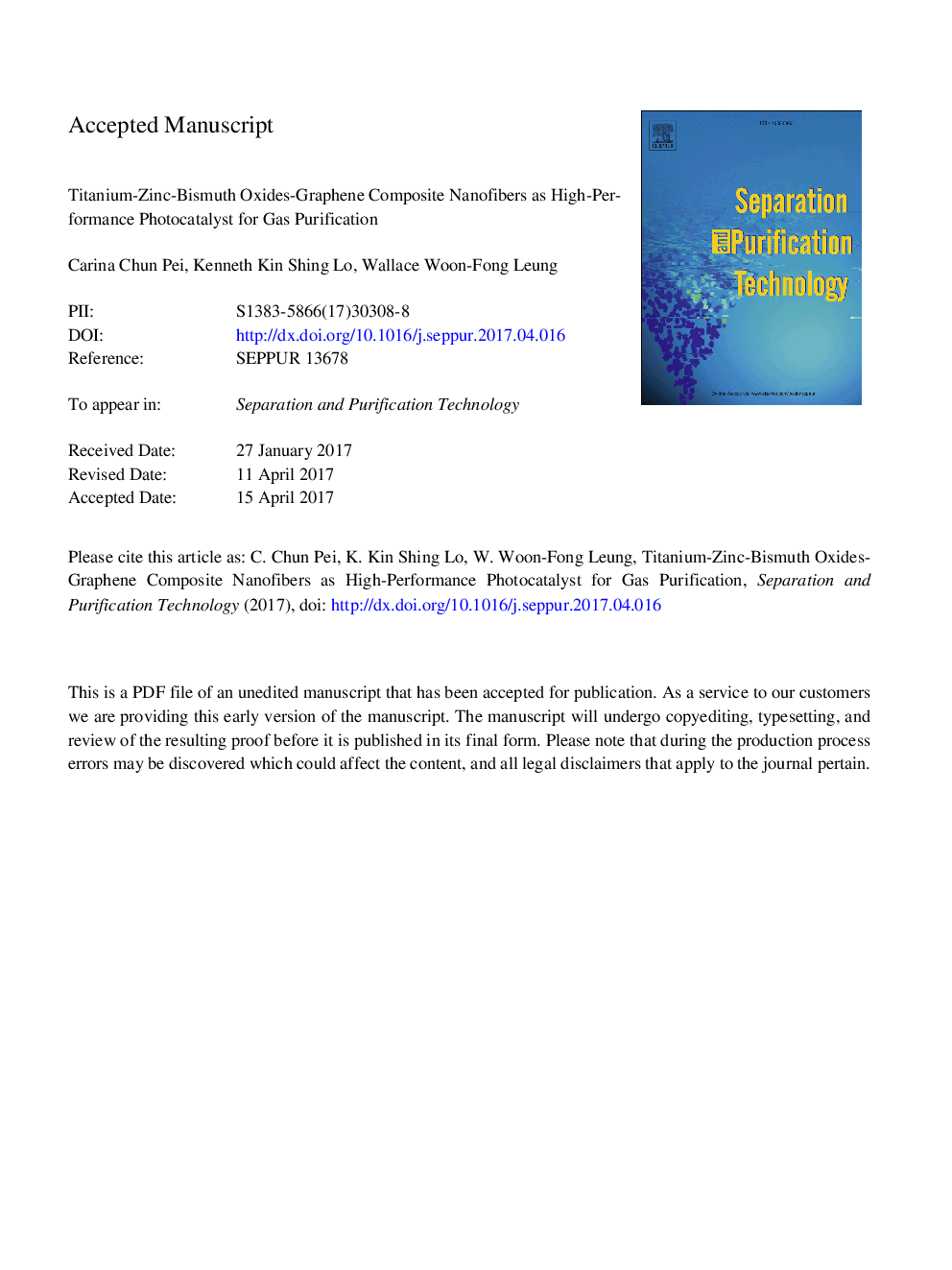| Article ID | Journal | Published Year | Pages | File Type |
|---|---|---|---|---|
| 4989749 | Separation and Purification Technology | 2017 | 34 Pages |
Abstract
Novel technologies have been on demand to develop improved photocatalyst for gas purification. Graphene has been used to improve the performance of photonic devices based on its high charge conductivity as well as other unique properties. Traditional approach uses discrete graphene sheets with sparse, sporadic deposition of semiconductor crystals (TiO2) as photocatalyst, which results in poor light harvesting and electron-hole recombination at the sheet edges. In our novel configuration, the edge effect has been eliminated by having the graphene sheets being rolled up into “spiral rolls” inserted in the 80Â nm TiO2/ZnO/Bi2O3 (TZB) nanofiber, and free electrons can only travel unidirectional in the graphene rolls along the axis of the nanofiber. The nanofiber is fabricated with its surface packed with 10-nm size TZB nanocrystallites that increases the surface area, thereby improving light harvesting. Further, the addition of ZnO and Bi2O3 reduce the band-gap energy of the composite facilitating harvesting of the visible light spectrum. Other than fast transport of electrons to sites where photocatalysis is needed, the graphene roll (exposed in between the pores of the TZB nanocrystallites) has proven to harvest more energy from the entire UV-vis spectrum and almost doubled the already large surface area of the nanofibers when maximum amount of graphene is added into the nanofibers. Note the larger surface area of the photocatalyst facilitates pollutant gas molecule adsorption, which is the first and an important step prior to photocatalysis. The TZB-Gr photocatalyst, after optimized with as much as 26.5% by mass of graphene in the nanofibers, has superior photoactivity in degradation of NO under solar irradiation. It is 35% higher than nanofibers with just TZB alone, at least 17% higher than traditional approach with discrete graphene sheets (with edge effect) with TZB particles deposited on the sheets, and 10 times better than 25-nm TiO2 nanoparticles (P25). Other photonic devices, such as solar cells, and non-photonic devices, such as bio-chemical sensors and lithium batteries, can also benefit from the innovative configuration of semiconductor nanofibers with inserted graphene for the low band-gap energy, fast charge transit, long electron life time, reduced recombination rate, and large surface area.
Related Topics
Physical Sciences and Engineering
Chemical Engineering
Filtration and Separation
Authors
Carina Chun Pei, Kenneth Kin Shing Lo, Wallace Woon-Fong Leung,
